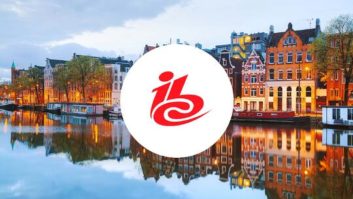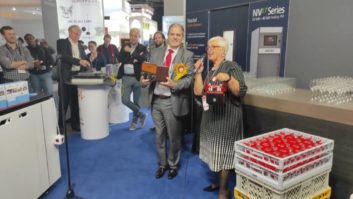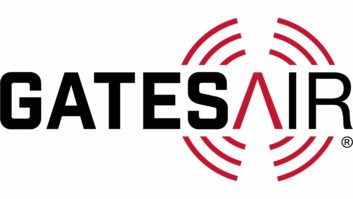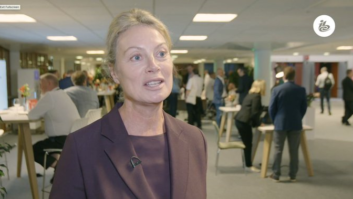IBC2019 is almost here. Between now and then Radio World will conduct several short Q&As with manufacturers about their plans and offerings, to help you get the most out of the big annual trade show. Rich Redmond is president and managing director, International, GatesAir, and Carlo Bombelli is executive technologist, GatesAir Srl.
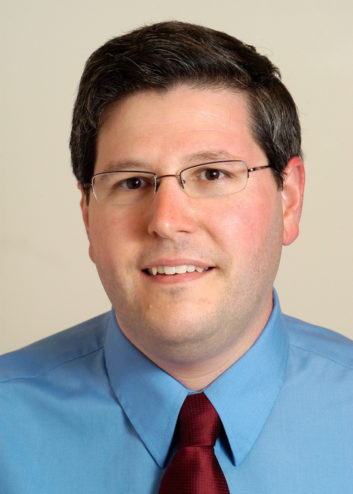
Radio World: How has business been for the company since last year’s IBC Show?
Rich Redmond: The global business for GatesAir remains strong. We had exceptionally strong performance in the United States with the spectrum repack, where we captured the lion’s share of that business. We have also experienced tremendous international growth, which was driven by a renewed strategic focus worldwide. We made investments in people and infrastructure in every region around the globe. The acquisition of ONEtastic establishes our European headquarters with sales, service, manufacturing and development. All of this highlights the commitment we’ve made to the global transmission market.
Radio World: What are you hearing from your customers about their business outlook this year? In what areas should we expect growth or the most interesting projects?
Carlo Bombelli: When you talk to customers around the world, the implementation of new technology varies broadcaster by broadcaster, country by country. The reallocation of UHF spectrum, and 5G implementation from global carriers, are two interesting examples. Meanwhile, some countries are working on their first transition from analog to digital, while others are moving to advanced standards like DVB-T2 and ATSC 3.0. In radio, we continue to see new FM licensing in different countries, the migration to DAB for digital radio, and a stronger embrace of the IT infrastructure to support audio contribution and distribution.
We are seeing significant adoption of new technology that enables lower total cost of ownership in all of these examples. We’re helping our customer realize those savings as they transition to new systems, as broadcast transmitters are substantially more efficient today than 10–15 years ago. Broadcasters and network operators are also using these technological advances to streamline their own operations.
Radio World: Within the last year or so the two large station ownership groups have emerged from bankruptcy. Are you seeing any increase in equipment sales or interest? What is your feeling for the overall health of the radio industry?
Redmond: The market dynamics between the TV and radio businesses are generally different. Spectrum policy dictates much of what happens in television, from spectrum repack initiatives to mobile data services. These dynamics don’t really affect the radio business, and we see healthy global opportunity for radio. India continues to rollout new commercial FM licenses, we see expansion of digital radio in Europe and Australia, and general advancements of radio networks in Africa, the Middle East and Latin America.
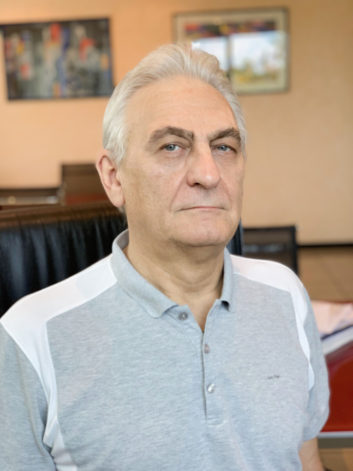
Worldwide, we are also seeing broadcasters update their existing infrastructure with higher efficiency technologies. This was the case with one of our most recent project wins, Nova Entertainment in Australia, which cited operational efficiency improvements as a major drive in their purchase requirements. At minimum, investments such as these will keep the radio market steady, while accelerated adoption of DAB and HD Radio will keep the market moving forward.
Radio World: You’ve been active in the equipment manufacturing market for years. What’s the biggest problem or challenge facing manufacturers right now? Does the trade row between the United States and China greatly affect you?
Redmond: I think many of the same challenges that our customers face certainly impact broadcasting manufacturers. We see fewer and fewer young people entering the RF broadcasting field, and those that do are being spread wider and further. Customers are increasingly looking to their suppliers as engineering resources as a result. We are addressing these dynamics through stronger training and education initiatives. We have developed some online training classes that specifically teach RF skills to young engineers that possess IT backgrounds.
There is no question that the recent round of tariffs in China affect the global electronics market. I wouldn’t say that GatesAir has been heavily impacted, but the tariffs ultimately ripple through just about everything that’s being made in electronics, including broadcast equipment.
RW: What new goodies will your company be showing? Why should attendees visit your stand?
Bombelli: We’re excited to be bringing our high-efficiency, software-defined TV and DAB radio transmitters for global broadcast standards to the GatesAir stand, 8.D60. We have some unique solutions for DAB, including a new high-efficiency liquid-cooled VHF solution, and a multicarrier transmitter that will broadcast up to three signals in a single transmitter, greatly simplifying multinetwork deployment.
We also have a very innovative pole-mounted transmitter that is ideal for areas that lack a transmitter shelter. The system mounts outdoors on the leg of a tower or a mast. It’s a high-efficiency, weatherproof system that revolutionizes the cost of deploying gap fillers and transposers, for example.
Redmond: On the Intraplex side, we have added video over IP transport to our Intraplex Ascent platform that was introduced at the NAB Show. The Ascent SRT Gateway is new for IBC and is ideal for broadcasters to securely transport high-bandwidth video from a centralized IT infrastructure to multiple transmission sites. All of these systems will be shown at Stand 8.D60.
Radio World: Going by the interest on our website, AoIP technology is on the top of the list for product acquisition and upgrades. Is that something you are seeing and if so, how are you addressing that?
Redmond: Audio over IP has been a big part of our portfolio for many years. Our Intraplex networking business began innovating for this space more than a decade ago with NetXpress, and our next-generation IP Link codecs have evolved to support virtually any audio contribution and distribution need. This includes innovations for AES67, MPX FM composition and digital AES192 transport, and now with Ascent we can manage audio over IP transport from standard computing platforms in the broadcasters’ IT infrastructure.
We are helping our customers manage DAB networking through dual EDI inputs, which take the IP transport stream for digital radio and put it directly into the exciter, lowering the broadcaster’s cost of deployment. And when sending these streams over highly complex networks, our Intraplex Dynamic Stream Splicing application adds another layer of transport reliability by duplicating streams over common or disparate network paths.
Radio World: What do you anticipate will be the most significant technology trend at the 2019 IBC Show?
Bombelli: Continuous improvements in operational efficiency. That includes energy efficiency in transmitters, but it all comes down to total cost of ownership. This is why we hear from so many customers that are interested in our outdoor pole-mounted transmitters, because these can really transform how TV and DAB radio services are deployed. And in general, they want modular, lightweight and resilient solutions that consume less space and energy.
Redmond: Using IP for content delivery, as well as remote control and monitoring, remains a significant focus at IBC. We continue to hear from more broadcasters that want the flexibility to control transmitters and manage data over the IP network. Our Intraplex IPConnect solution offers some interesting applications in that regard.
Radio World: Will you be attending any sessions or looking forward to any events?
Redmond: We do our best to participate in every facet of the show, but first and foremost IBC is a venue for us to meet with customers from around the world and help to solve their problems. We try to be very customer-focused, but we certainly try to take advantage of opportunities on the cutting-edge. IBC is second to none when it comes to offering new and innovative topics presented by some of the world’s market-leading technologists.
Radio World: You’re a show veteran, how has the show changed since your first visit?
Bombelli: The types of visitors have changed over time. We don’t see as many big groups from the same companies as we used to, and certainly consolidation in the market has contributed to that change. But we do see a nice mix of commercial and government public service broadcasters, as well as network operators. IBC remains the best place to meet our customers.
Redmond: This is also an excellent opportunity to meet with our channel partners who travel from many countries to attend IBC. I would add that the way technology has changed has also contributed to fewer visitors by the year. It’s undeniable that the last five years have seen a merging of standard computing and IT platforms with broadcast-specific applications. The days of broadcast products being relatively unique and hardware-based have transitioned to more software-based solutions.
Radio World: Finally, how has the ONEtastic post-acquisition process been going?
Redmond: It’s been going very well from the integration perspective. We just had our global sales team at the GatesAir Srl facility in Italy for training. We have been hiring new staff for that facility so that we have more resources on the ground in Europe. Our pipeline of opportunities has grown significantly. It’s a very exciting time.
Bombelli: We couldn’t be more excited and energized to become part of the GatesAir family, and our presence will certainly be felt on the IBC stand.
[Subscribe to our newsletter and get it delivered right to your inbox.]





